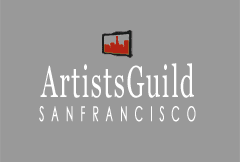 |
| The Artist Hines |
Hines: I grew up in Queens, New York. Of course you know New York is a mecca for art and culture. Having access to places like the Metropolitan Museum of Art, Whitney Museum, Guggenheim and N.Y Moma was invaluable to my education in art. Lets not forget all the galleries uptown, in the village and Soho. I am a self taught artist but growing up in New York I was never for lack of inspiration, influence or education.
AG: How did you first come to doing art? Was it ever a hobby or part-time passion before you went full-time?
 |
| Some of his older work |
AG: What other jobs have you done?
Hines: My father was not too keen on my going to an art high school despite the fact that I was always drawing and showed a lot of talent. So I basically followed a more academic route. I had many jobs...selling hamburgers, photocopier supplies, I even had jobs doing what was then called phototypsetting and paste-up mechanicals. That was in the days before personal computers. Eventually I got a degree in computer programming and worked for many years as a computer operator.
AG: When did you commit to doing art full-time?
 |
| One of Hines' ethereal abstracts |
AG: Many people have described the move to being a full-time artist as a "leap of faith". How did this transition affect you?
Hines: For me I think it was more of a leap of passion fueled by the support of my artist friends. It was not easy in the beginning. I suddenly had time to focus on my artwork but I soon realized that I knew nothing about the business and marketing of being a full time artist. I wasn't starving but there were times I survived with the help of some financial assistance from my family. I got part-time jobs at art stores until eventually I was able to support myself solely from my art income.
AG: Did your family support you in your artistic passion? How has the support, or lack thereof, affected your artistic direction?
Hines: I was the first artist in my family and looking back, my mother and father were not overwhelmingly supportive of me choosing art as a profession. I was crushed when my father refused to let me attend Art & Design High School in Manhattan. I think for them art was more of a hobby than an occupation. My older brother, on the other hand, was the first one to push me to exhibit my work and join a local art group. This eventually lead to my first art show, an outdoor group exhibition with The Flushing Art League. The rest is as they say, history.
AG: Describe a day in the life of the Artist Hines. What studio hours do you keep and how do you balance other demands in your life?
 |
| Hines in the studio |
AG: Art making is intrinsically a domain of much uncertainty. Artists tend to be adventurous people. Have you taken big risks in other areas of your life? Tell me a wild story about yourself!
 |
| Hines with his students after a recent workshop |
For more information about the Artist Hines, please visit his web site

